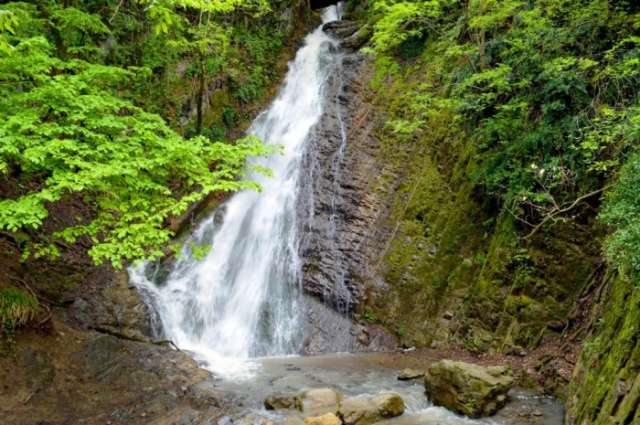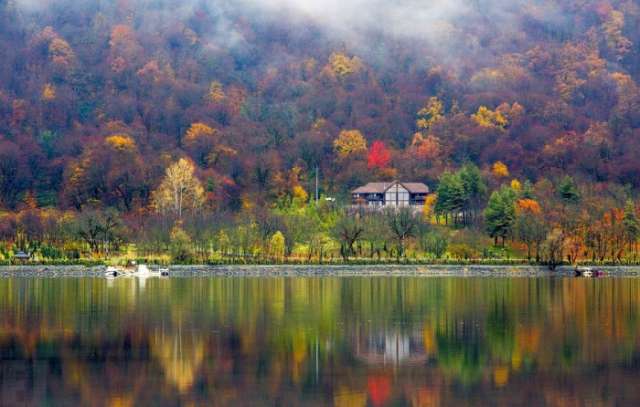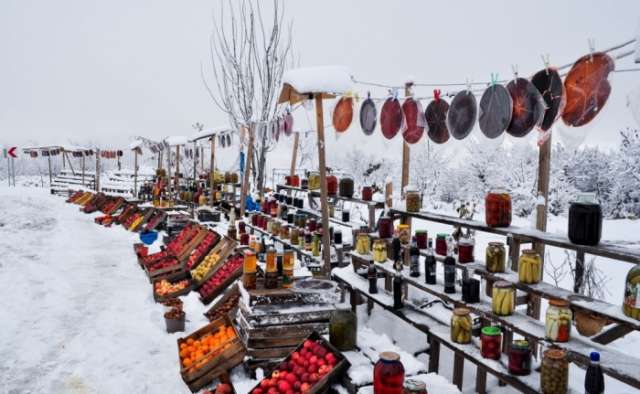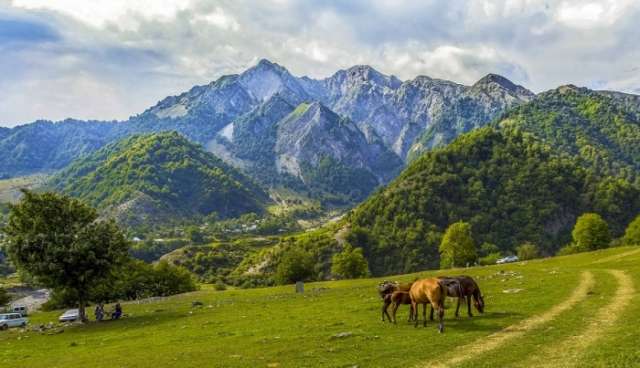Gabala is the capital of the region of the same name, and is relatively close to Azerbaijan’s modern borders with Russia. Located in the north of Azerbaijan, the region is known for its temperate climate with an average annual temperature of about 10 degrees Celcius (50 degrees Fahrenheit). Because of the excellent weather year-round, both winter and summer tourism are well developed in the region.

Azerbaijan's third highest mountain, Tufandag is the best place for those loving skiing. / Denis Svechnikov / National Geographic
Places To See
Modern-day Gabala, one of Azerbaijan’s fastest-growing cities after its capital Baku, is situated near the ruins of the ancient capital Cabalaca. Archaeological excavations began in the middle of the 19th century, and nearly two centuries later the Gabala Archaeological Center opened its doors to history buffs and curious tourists.

Gabala region's Nokhur lake in winter. / Alexander Melnikov / National Geographic
Here you can walk along the excavation sites and enjoy the remains of ancient weapons and examples of embroidery while imagining what life in Caucasian Albania must have been like centuries ago. In 2013, Gabala was declared the Cultural Capital of the Commonwealth of Independent States for its contribution to the history of Azerbaijan and the region.
For those less interested in history, activities like riding roller coasters, playing laser tag, go-cart racing, and much more are available. In the winter, snow-capped Tufandag Mountain, standing at a height of 4,062 meters, is packed with skiers, while in summer the biggest ropeway in the Caucasus is open.
Just four kilometers away from Gabala, in the village of Vandam, water cascades down seven naturally occurring steps of rock in a waterfall popularly called the Seven Beauties. Each level of the waterfall can be accessed via a long, narrow brick staircase. Locals say that a wish made at the top of the waterfall is destined to come true.

Local residents believe that the wish made on the top of the Seven Beauties waterfall located in Azerbaijan's Gabala region will necessarily come true. / Kamran Hasanov / Fly2Baku
Vandam village is also known for its Bucket Bazaar, where fruits and vegetables are sold in buckets rather than by weight. Pickled vegetables, jams, compotes and honey mixed with ground nuts, such as almonds, hazelnuts and walnuts, are also for sale. Some items might be considered exotic by foreign standards, including rose water, doshab or the thickened juice of mulberries, jam made from violets, mountain strawberries and barberry juice.
Fans of fishing are advised to visit lake Nokhur, located in the southeastern corner of the city. Local residents have long called it a mirror lake: surrounded by mountains and thickets of reeds, the lake reflects its surroundings perfectly, looking like a mirror. While swimming in it is strictly forbidden, fishing and boating are permitted.

It is strictly forbidden to swim in Gabala's Nokhur lake, but it's possible go boating and even fishing. / Etibar Jafarov / National Geographic
If you happen to visit Gabala towards the end of July, definitely check out the Gabala International Music Festival, which has been held annually since 2009 and brings together classical music aficionados from around the world to hear strings, horns and pieces.
Culinary Tourism
Azerbaijan’s national cuisine is another excuse for making Gabala part of a visit to the South Caucasus region. Just 20 minutes away from the ruins of the ancient Albanian capital there is a village known as Nij. This place is home to people who are said to be descendants of the Caucasian Albanians, called udins, who have preserved their language, traditions and cuisine.

On the way to Azerbaijan's Gabala region. / Yulia Borisova / National Geographic
If you are in Nij, a day spent at the local bazaar to buy souvenirs and handmade ornaments is well worth it. Afterwards, dinning at a local café is a perfect way to spend a relaxing evening, enjoying dishes like sayigi, a rice porridge with meat; fyrrama, a stuffed turkey baked in a tandoor (a clay oven); chilov, a rice pilaf made with beans or with chicken known as doshamali ash.
While there are no hotels in Nij at the moment, tourists should not be discouraged. Homes are open as bed-and-breakfasts, which can be rented for a few days, making the village a perfect spot for exploring the surrounding areas in the northern half of Azerbaijan.
The origianl article was published in Caspian news.
More about: #Azerbaijan #Gabala
















































